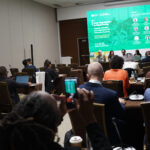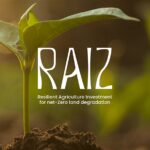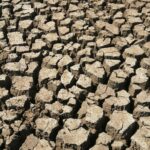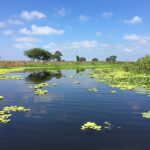Soft Launch: Trigger change! Innovative agriculture solutions for land restoration

A new university course on innovative agricultural solution for land restoration was launched on 24 January, during the commemoration of World Education Day held every year. The theme for 2024 is “Cultivating a New Wave of Environmental Restorers: Commemorating International Education Day.”
The key takeaway is the idea that the course is producing “agents of change”.
The soft-launch of the course titled, “Trigger change! Innovative agriculture solutions for land restoration,” was introduced at the Let’s Talk Land Episode 6 webinar moderated by Dr Karen Sudmeier, G20 GLI Education and capacity building expert, with three academics as speakers.
Dr Norman Kearney, (University of Berne, Switzerland), Dr Seema Purushothaman (Azim Premji University, India), and Dr Samuel Olajuyigbe, (University of Ibadan, Nigeria), presented the course, which will be available from April 2024.
The modular course is aimed at higher-level bachelor or masters students studying agriculture and related topics. \It aims to broaden student perspectives to include: sustainable agriculture techniques for land restoration, decision-making tools, innovation, technology and entrepreneurship. It was developed in collaboration with university professors and experts in land restoration and agricultural development, drawn from around the world.
The speakers on this panel started by highlighting the gap in the current agriculture education curricular and concluded with a lively debate on how this course can help fill this gap.
Dr Sudmeier opened by speaking about the need for the course, as current education systems do not produce experts, supervisors or technicians who are well-equipped to undertake land restoration.
Building on this claim, Dr Purushothaman discussed how global sustainability conversations often fail to mention land degradation as an issue. This, despite the prevalent role of agriculture in regions such as the Global South and the excessive use of water, minerals and energy in agricultural practices.
Dr Olajuyigbe spoke more about this education gap. More specifically, how when he joined University to teach, there was a separation in conversations about land degradation and deforestation and conversations around who was going to contend with these issues.
The new course aims to bridge this gap. As the title emphasises, the key is triggering a paradigm shift at an educational level. The course aims to help young learners, theoretically and practically, to engage in sustainable agricultural practices and give them the tools and ability to become future land stewards and eco-preneurs.
Following Dr Sudmeier’s introduction of the course, Dr Kearney elaborated on the use of technology that the students will be able to access. World Overview of Conservation Approaches and Technologies (WOCAT) and the Centre for Development and Environment, University Bern (CDE), collaborated in developing the course.
Their use of the principles of Sustainable Land Management (SLM), decision support frameworks and monitoring and assessment tools equip students with holistic and in-depth understanding of land restoration.
Dr Kearney also dove deeper into the specific modules of the course. They are designed using a learner-centred approach that promotes action-oriented and transformative learning for students.
The course’s first module delves into “Land, Landscapes and Society,” introducing fundamental concepts of land restoration. It explores landscapes, good practices, trends in land degradation and historical perspectives. Its overall focus is to give an overview of problems and potential solutions.
The possible solutions in question are discussed in the second module, “Agricultural Approaches to (SLM) for Land Restoration.” This section zeroes in on the role of SLM in sustainable agriculture and its contributions to the broader goal of land restoration.
Module 3, “Tools and Technologies for Land Restoration Assessment and Monitoring,” focuses on technology. It provides an overview of various tools and technologies relevant to SLM and land restoration, letting students learn the applications of data analysis to specific cases.
Module 4, “Decision-Making Tools and Enabling Factors for Land Restoration,” discusses the economic and social rationales behind land restoration. It employs tools such as social and cost-benefit analyses, facilitating decision-making processes supporting land restoration efforts.
Module 5, “Catalysts for Innovation and Start-Ups,” contemplates SLM as an agricultural innovation for land restoration. The course aims at creating inclusive and scalable innovations, specifically targeting advancements in sustainable agriculture for land restoration.
Although the course is modular, instructors who engage progressively with all five modules also allow their students to work on a cumulative project to develop a business plan for SLM for land restoration entreprise or a social entreprise project
In discussing this hands-on approach to learning, Dr Purushothaman highlighted the course’s interdisciplinary nature. This course provides students with a critical understanding of sustainability and sustainable development, which are increasingly relevant discussion areas across all disciplines.
It is climate-change compliant in that it promotes climate-smart agriculture, solutions and businesses. Furthermore, students are introduced to multiple enabling factors for land restoration, and importantly, decision-making tools for deciding on best options for land restoration and sustainable agriculture.
They are then further exposed to communicating these decisions and enabling the options they have in different contexts. The point is to allow future land stewards to work across various institutions and disciplines — education, finance, government, and more.
Dr Olajuyigbe elaborated the idea of eco-entrepreneurs and the overall presentation of land restoration as an issue. As younger people move away from traditional agricultural practices and land continues to degrade, the conversation around restoring land is framed primarily through an environmental preservationist lens.
This course adds a socio-economic element, as it wants to vocalise the environmental, economic and social value of land restoration. He directly addressed the misconception that land restoration is a long-term project that takes decades to show its outcome. He explained that land stewards can begin using sustainable approaches to earn properly, and even make a career from landscape and land restoration programs.
The techniques and technology that students are exposed to on a global level with this course can be leveraged upon any local land restoration program. When it is combined with proper planning and monitoring of costs and benefits, it can create a profitable business — as a result, creating eco-preneurs.
Finally, Dr Sudmeier presented the questions raised by webinar participants, which addressed topics, such as the course’s emphasis on stakeholders like local farmers or the course’s ability to equip students to become future agricultural policy makers.
With this course, graduating agricultural engineers will be able to use appropriate technology in more local and specialised settings for land restoration.
Students who get into policy making will have a better systemic understanding of linkages between agriculture and land restoration and thus, be more competent in implementing policies that consider land restoration methods and land usage.
Young professionals will have a lot of scope to create start-ups that are lucrative and socially and environmentally responsible.
Trigger change! Innovative agriculture solutions for land restoration offers an exciting new direction for education institutions, and will be available to academic faculty from April 2024.
Following its release, there is an opportunity for wider learning through the development of a Massive Open Online Course (MOOC) titled, “A land of opportunity through restoration.” The MOOC will be developed from the second quarter of 2024 until 2025.
For queries or more information on this course,
visit: Trigger change! Innovative agriculture solutions for land restoration,
follow @G20 Global Land Initiative or contact ksudmeier@unccd.int.




